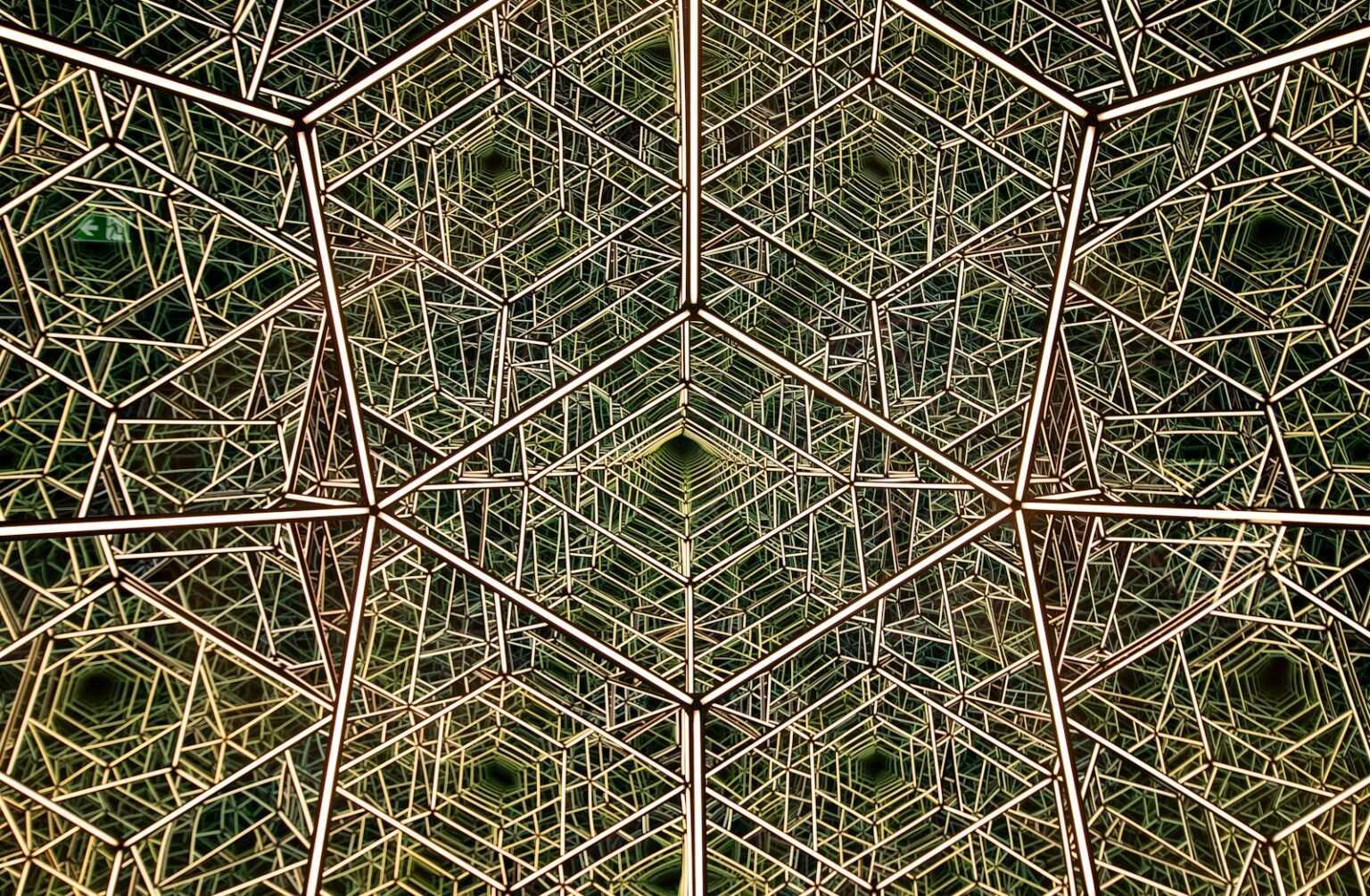Efficient construction of Voronoi diagrams begins with understanding point set partitioning in multidimensional spaces. Implementations benefit from incremental methods that maintain convex hull properties during point insertion, ensuring robustness and minimizing computational overhead. Exploring divide-and-conquer techniques reveals pathways to optimize nearest neighbor searches critical for Voronoi cell generation.
The convex hull serves as a foundational structure enabling boundary approximation and region delimitation. Algorithms leveraging gift wrapping or Graham scan approaches offer practical insight into polygonal envelope extraction, which directly influences diagram accuracy. Careful management of edge cases during hull computation prevents topological inconsistencies in subsequent spatial subdivisions.
Spatial subdivision algorithms require rigorous attention to data structures supporting dynamic updates and efficient queries. Balanced trees and planar graph representations improve runtime performance when handling large datasets for diagram creation. Experimentation with sweep line strategies uncovers scalable solutions for real-time applications demanding rapid recomputation of spatial partitions.
Computational geometry: spatial algorithm design
Efficient partitioning of multi-dimensional data is critical for optimizing blockchain systems that rely on geospatial or network topology analysis. Utilizing Voronoi diagrams provides a robust method to subdivide space based on proximity criteria, enabling faster query responses and enhancing consensus mechanisms in distributed ledgers. By implementing these proximity maps, one can segment nodes or transaction clusters with precision, improving load balancing and reducing latency in peer-to-peer communication.
Convex hull extraction remains a foundational operation for boundary determination within datasets representing digital assets or network nodes. The convex shape encapsulates points of interest, facilitating collision detection and data pruning strategies vital for maintaining blockchain integrity during state validation. Employing hull-based techniques optimizes resource allocation by delimiting regions where cryptographic proofs or smart contract executions are concentrated, thereby accelerating verification pipelines.
Advanced Partitioning Techniques in Blockchain Topologies
The application of tessellation structures such as Voronoi partitions extends beyond classical spatial queries into the realm of decentralized ledger technology. Algorithms that construct these partitions adapt well to dynamic node distributions, enabling real-time adjustment of data shards across the network. For instance, in sharding protocols, defining shard boundaries via proximity metrics enhances fault tolerance and throughput by minimizing cross-shard interactions–crucial for scalability.
Integrating hull computation algorithms with spatial indexing structures generates efficient filters for transaction validation processes. These filters quickly identify outliers or anomalies by encapsulating typical transactional behavior within geometric boundaries. For example, a convex hull surrounding frequent transaction patterns can assist anomaly detectors in isolating suspicious activities without exhaustive ledger scans.
- Tessellation-based load distribution: Voronoi cells map node responsibilities effectively.
- Boundary simplification: Hull algorithms reduce computational overhead by focusing on essential perimeter points.
- Anomaly detection: Geometric enclosures help isolate irregular transactional flows.
Polygonal subdivision methods derived from planar graphs offer granular control over data localization strategies essential for privacy-preserving computations on blockchains. Implementations leveraging Delaunay triangulations complement Voronoi constructions by providing dual graph relationships that support efficient routing protocols and secure multiparty computations. These approaches facilitate optimal path selections while preserving confidentiality constraints inherent in zero-knowledge proofs.
The iterative refinement of geometric constructs through incremental insertion techniques allows adaptive updates to node clusters as blockchain states evolve. Experimentally testing these methods under varying network scales reveals trade-offs between update speed and partition accuracy. Such analyses contribute to developing resilient architectures where spatial indices remain consistent despite adversarial conditions or rapid topology changes common in permissionless networks.
This scientific exploration invites further inquiry into how advanced spatial partitioning can underpin future blockchain enhancements. By systematically experimenting with different tessellation schemes and boundary approximations, researchers can uncover new pathways to optimize cryptographic workflows and enhance system robustness against spatially correlated attacks. Encouraging hands-on experimentation with open-source libraries supporting geometric computations accelerates this discovery process while building foundational skills pivotal for innovation at the intersection of mathematics and distributed ledger technologies.
Spatial Data Indexing Methods
Efficient management of multidimensional data demands specialized indexing techniques optimized for proximity queries and range searches. One fundamental approach involves the construction of convex hulls, which form the minimal convex boundary enclosing a dataset. This geometric structure serves as a preprocessing step, allowing rapid exclusion of distant points during search operations by limiting the candidate set to those within or near the hull.
Another powerful technique utilizes Voronoi diagrams, partitioning space based on nearest-neighbor relationships. Each cell in a Voronoi tessellation contains all points closer to a specific seed point than any other. This property facilitates efficient nearest neighbor searches and clustering by reducing complex distance computations to simple cell membership tests. Implementations often leverage Fortune’s sweep line method for planar constructions with O(n log n) complexity, making it scalable for large datasets.
Indexing structures such as R-trees harness hierarchical bounding rectangles to organize spatial objects dynamically. These tree-based models recursively group geometries into nested minimum bounding rectangles (MBRs), enabling logarithmic query times for intersection and containment checks. The adaptability of R-trees suits irregular distributions and supports insertions and deletions without significant overhead, as demonstrated in geospatial database systems.
K-d trees split multidimensional points along alternating axes to form balanced binary trees, ideal for low-dimensional spaces. Their axis-aligned partitioning simplifies range queries and nearest neighbor searches but suffers performance degradation as dimensionality grows due to the “curse of dimensionality.” Enhancements like approximate nearest neighbor algorithms mitigate this by prioritizing speed over exactness, useful in high-frequency trading applications where latency is critical.
Delaunay triangulation complements Voronoi diagrams by connecting points to maximize minimum angles between edges, preventing skinny triangles that degrade numerical stability. This triangulation underpins mesh generation in finite element methods and assists in interpolating spatial data smoothly. Algorithms such as incremental insertion or divide-and-conquer facilitate its construction with proven worst-case efficiency bounds.
The integration of these methods can be observed in blockchain-based geospatial applications requiring secure location verification and efficient query processing. For instance, combining convex hull filtering with Voronoi-based proximity assessments ensures robust validation of transaction origins while minimizing computational load. Experimentation with hybrid index structures tailored to specific data distributions reveals pathways toward optimizing consensus protocols informed by spatial relations.
Collision detection in 3D spaces
Efficient identification of collisions between three-dimensional objects demands precise methods leveraging convex structures and spatial partitioning. Employing convex hulls to approximate complex shapes reduces computational overhead by simplifying collision queries into manageable interactions between convex polyhedra. This approach enables rapid exclusion of non-intersecting pairs before deeper analysis, optimizing the overall process.
Implementations frequently utilize Voronoi diagrams as a framework for proximity analysis, segmenting space according to the nearest object features. By constructing these partitions, one can swiftly isolate regions where potential intersections might occur, thus streamlining the search for contact points. Such spatial subdivision is especially beneficial in dynamic environments where object positions continuously change.
One practical method involves incremental updates of bounding volumes combined with feature-based checks derived from the convex structure of each object. For instance, separating axis tests applied to hull representations allow determination of non-overlapping conditions without exhaustive point-wise comparisons. Case studies in robotics simulation demonstrate that this technique balances accuracy with performance, enabling real-time responsiveness even under dense object clustering.
Advanced strategies integrate mesh simplification guided by geometric properties alongside hierarchical data structures like k-d trees or octrees. These hierarchies partition space recursively, reducing search complexity logarithmically relative to the number of elements. Experimental benchmarks indicate that coupling such structures with Voronoi-based spatial indexing significantly enhances throughput in collision detection tasks within virtual reality frameworks and autonomous navigation systems.
Convex Hull Algorithms Applications
Convex hull computation plays a pivotal role in defining the minimal enclosing boundary for a given set of points, enabling numerous practical applications across various fields. For instance, in geographic information systems (GIS), constructing the hull around clusters of geographical data facilitates efficient area estimation and boundary detection. The process inherently involves techniques from planar figure analysis, where each point is iteratively assessed to form the smallest convex polygon encapsulating all inputs.
In robotics and autonomous navigation, outlining obstacles or safe zones using hulls enhances path planning accuracy. Here, the extraction of such boundaries supports collision avoidance algorithms by providing simplified yet reliable representations of complex environments. The integration with Voronoi diagrams further enriches this spatial partitioning by segmenting regions based on proximity, allowing robots to make calculated decisions regarding movement and resource allocation.
Applications in Network Security and Data Visualization
Network security utilizes hull-based methods to detect anomalies within multidimensional datasets representing traffic flows or user behavior patterns. By enveloping normal activity clusters within convex shapes, deviations become more apparent as outliers lying outside these boundaries. Such spatial delineations aid in proactive threat identification without exhaustive scanning of every individual data point.
Visual analytics frequently employs polygonal envelopes to encapsulate scattered data points for better interpretability. Convex shapes serve as fundamental tools to reduce clutter and emphasize cluster extents during interactive exploration sessions. Particularly when combined with Voronoi tessellations, they provide a dual-layered approach: while the hull outlines global distribution limits, Voronoi cells reveal localized density variations within those limits.
Experimental Methodology for Hull Construction
One effective experimental approach involves iterating through incremental point addition while maintaining a dynamic boundary update mechanism. Starting with an initial minimal shape–often a triangle–each subsequent point triggers re-evaluation of visible edges and vertex inclusion criteria based on orientation tests such as cross products. This stepwise refinement embodies principles akin to laboratory-controlled trials where variables are adjusted systematically to observe outcomes.
The interplay between hull extraction and diagrammatic partitioning like Voronoi structures can be studied by overlaying both results on identical datasets. Researchers may explore how modifications in input distributions influence the shape complexity and computational efficiency of these constructs. Through repeated trials adjusting point density or arrangement patterns, insights emerge about stability thresholds and performance bottlenecks relevant for real-world implementations.
Polygon triangulation techniques
Accurate partitioning of polygons into triangles facilitates numerous applications in fields relying on geometric computations. One effective approach involves leveraging the convex hull of a polygon to identify candidate diagonals for triangulation, ensuring that no edges intersect improperly. This method benefits from the property that any simple polygon lies entirely within its convex hull, allowing decomposition strategies rooted in hull analysis to simplify complex shapes systematically.
Another prominent technique utilizes Voronoi diagrams, which segment a plane based on proximity to a discrete set of points. By constructing a Voronoi diagram corresponding to the polygon’s vertices, it becomes possible to extract edges forming a dual Delaunay triangulation. This duality provides an elegant mechanism for subdividing polygons into triangles while maintaining optimality criteria such as maximizing minimum angles, enhancing numerical stability in subsequent processing steps.
A widely adopted iterative approach begins by identifying ears–triangles formed by three consecutive vertices with no other vertices inside them. The “ear clipping” process removes these triangles sequentially until the entire polygon is decomposed. This technique excels in handling simple polygons with arbitrary shapes and can be optimized through data structures tracking vertex visibility and adjacency, reducing computational overhead and improving performance in real-time systems.
When dealing with polygons containing holes or multiple disjoint components, advanced methods integrate constrained triangulations that respect predefined boundaries. These algorithms often combine spatial subdivision with incremental insertion strategies, ensuring that the resulting mesh accurately reflects both outer boundaries and internal voids. Such precision is critical for simulations requiring faithful domain representations, including finite element analysis and geographic information system modeling.
The choice among these methodologies depends heavily on factors like polygon complexity, desired mesh quality, and computational resources. Experimental comparisons reveal that combining convex hull preprocessing with Voronoi-based refinement yields robust results for large datasets, while ear clipping remains practical for simpler cases or when implementation simplicity is paramount. Ongoing research continues exploring hybrid frameworks incorporating machine learning heuristics to predict optimal triangulation pathways based on geometric features extracted from input data.
Conclusion: Nearest Neighbor Search Strategies
The integration of Voronoi diagrams and convex hull constructs into proximity querying presents a powerful framework for optimizing nearest neighbor retrieval. Leveraging these spatial decompositions allows for partitioning the search space into manageable regions, dramatically reducing query complexity compared to brute-force methods. The interplay between polygonal hull boundaries and region-based indexing highlights an elegant synergy that can be exploited in multi-dimensional data structures.
Future advances will likely hinge on hybrid techniques combining incremental hull updates with adaptive Voronoi tessellations, enabling dynamic datasets to maintain efficient neighborhood relationships in real time. Incorporating probabilistic models alongside deterministic partitions may further enhance robustness against noisy or high-dimensional inputs, expanding applicability beyond static geometric configurations.
Key Technical Insights and Implications
- Voronoi-based strategies: Enable spatial subdivision where each cell uniquely identifies the closest site, minimizing redundant distance calculations and accelerating nearest neighbor detection.
- Convex hull utilization: Provides a boundary approximation that refines candidate sets by excluding points outside the minimal enclosing polygon, effectively pruning search spaces.
- Incremental updates: Algorithms capable of adjusting hulls and Voronoi cells dynamically support streaming data contexts, critical for blockchain transaction clustering or real-time analytics.
- Dimensional scalability: While two-dimensional cases benefit from clear geometric interpretations, extending these principles to higher dimensions demands careful consideration of computational overhead versus accuracy trade-offs.
The convergence of geometric partitioning schemes with neighborhood query mechanisms opens promising avenues for designing next-generation indexing solutions tailored to decentralized ledger analytics and large-scale peer-to-peer networks. Experimentation with layered diagrammatic representations might reveal novel heuristics that balance preprocessing cost against query latency, a pivotal factor in performance-critical environments.
This research trajectory invites interdisciplinary inquiry–melding insights from convex analysis, topological data structures, and statistical inference–to cultivate algorithms that not only identify nearest neighbors swiftly but also adapt gracefully under evolving dataset distributions. Embracing this experimental mindset fosters breakthroughs essential for advancing spatial indexing in complex digital ecosystems.








